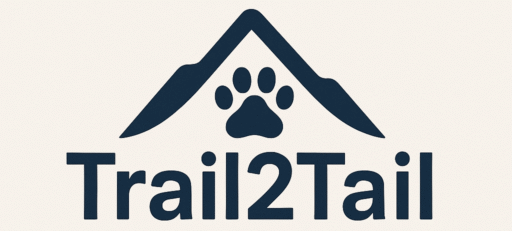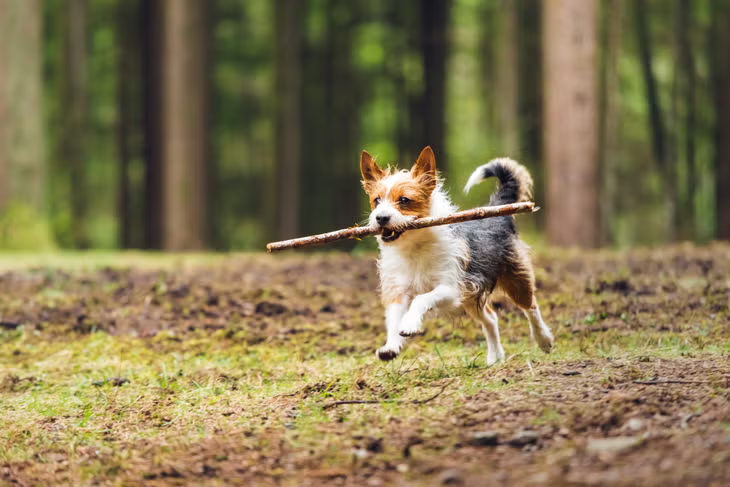Over time, you may find that your dog’s routine playtime can become repetitive and unchallenging. To keep your canine companion mentally engaged and happy, it’s important to explore adventure games that stimulate their mind. This blog post will introduce several creative games and activities you can implement, transforming playtime into an enriching experience for your furry friend. Engaging your dog in these stimulating challenges not only strengthens your bond but also helps them develop imperative problem-solving skills.
The Cognitive Benefits of Non-Traditional Games
Engaging your dog in non-traditional games offers a plethora of cognitive benefits that extend beyond mere entertainment. These activities stimulate mental agility, enhancing their ability to think critically and adapt in various situations. As your dog navigates new tasks and challenges, you’ll notice improvements in focus, confidence, and a deeper bond with you, their handler. Incorporating these games into your routine can yield not just a happier dog, but a smarter one.
Enhancing Problem-Solving Skills
Non-traditional games encourage your dog to use their intelligence to tackle challenges, thereby enhancing their problem-solving skills. Activities such as puzzle toys or scent work require your pup to think creatively to find solutions. Research has shown that mentally stimulating tasks can lead to a more adaptable and resourceful dog, as they learn to strategize and experiment with different approaches to achieve their goals.
Boosting Memory and Retention
Memory and retention improve significantly when your dog is engaged in stimulating activities. Games that require tracking scents or finding hidden objects compel your dog to recall information and recognize patterns over time. These exercises help solidify memories related to specific tasks, enhancing your dog’s ability to remember commands and previously learned behaviors.
Engaging your dog in memory-boosting games promotes neural connections in the brain, contributing to better overall cognition. Studies indicate that dogs who regularly participate in mentally challenging activities have improved memory retention, particularly in recalling scents or commands. The act of retrieving specific toys or finding hidden treats reinforces their cognitive mapping abilities, ensuring that they not only remember but also apply learned skills effectively in future situations.
Top Adventure Games That Ignite Curiosity
Exploring adventure games can significantly enhance your dog’s mental engagement. Activities that harness their instinctual behaviors provide mental stimulation while also promoting physical health. Games that incorporate elements of exploration and novelty keep your dog’s curiosity piqued, encouraging them to interact with their environment in innovative ways. This chapter highlights the most effective games to engage your dog’s natural instincts and enhance their problem-solving skills, turning playtime into a rich learning experience.
Interactive Puzzle Toys and Their Impact
Interactive puzzle toys challenge your dog’s cognitive abilities, enabling them to think critically and solve problems for treats. These toys come in various difficulties, ensuring continuous engagement as your dog masters each level. By requiring them to manipulate objects or uncover hidden compartments, you stimulate their intelligence and keep boredom at bay. This mental engagement reduces undesired behaviors and fosters a rewarding experience as they discover and learn through play.
Scavenger Hunts: Combining Physical and Mental Challenges
Scavenger hunts offer an exciting way to blend physical exercise with mental challenges. You can set up a simple scavenger hunt by hiding treats or toys around your home or yard. As your dog sniffs out each item, their natural tracking instincts come alive, encouraging exploration and problem-solving. Mixing in varied scents and complexities keeps the game fresh and beneficial, ensuring your dog’s curiosity is constantly ignited.
Creating a scavenger hunt is straightforward: start by hiding treats in increasingly difficult locations and encourage your dog to find them. You can vary the level of complexity by changing the hiding spots, using scent trails, or incorporating commands that require them to perform actions like sitting or waiting. Not only does this engage their mind, but it also offers physical exercise as they dart around looking for the treasure. Research indicates that engaging dogs in such activities can significantly enhance their overall satisfaction and reduce anxiety, leading to a happier, healthier pet.
Social Engagement: Teamwork in Dog Adventure Games
Engaging your dog in cooperative adventure games fosters social bonds and improves problem-solving skills. These activities create scenarios where dogs work together, enhancing their communication and teamwork abilities. By participating in tasks that require coordination, your dog learns to interpret social cues and develop relationships not just with you, but also with other dogs. This multifaceted interaction can lead to increased confidence and improved social behavior.
The Role of Playdates in Cognitive Development
Playdates offer necessary opportunities for dogs to interact, stimulating their cognitive growth. Through varied social interactions, your dog learns to navigate different play styles, enhancing adaptability and decision-making. Engaging in play with peers sharpens their instincts, encourages creativity in play, and reinforces social hierarchy, all vital components for a well-adjusted canine companion.
Group Challenges: Enhancing Cooperation Among Dogs
Group challenges promote teamwork among dogs, encouraging them to collaborate to achieve common goals. These activities can range from obstacle courses to treasure hunts that require dogs to work together to find a prize. This format teaches dogs how to communicate effectively, share resources, and build trust within their pack, ultimately leading to a more cohesive social environment.
Examples of effective group challenges include relay races where dogs must pass a toy or complete tasks together, promoting a sense of unity. Activities like tracking scents in pairs require dogs to rely on each other’s strengths, enhancing their problem-solving abilities. Such challenges help to develop empathy as dogs learn to respond not just to your commands but also to the actions of their peers. These enriching experiences form the foundation for lifelong friendships and a more harmonious pack dynamic, ensuring your canine companions flourish both mentally and socially.
Tailoring Activities to Different Breeds and Temperaments
Understanding your dog’s breed and temperament enables you to create tailored activities that effectively engage them. Labrador Retrievers thrive on tasks involving water and retrieval, while herding breeds like Border Collies excel in agility courses. Temperament plays a significant role, too; a high-energy dog might enjoy games that involve running and chasing, while a more laid-back breed could prefer scent-based puzzles. Customizing activities ensures your dog remains challenged and stimulated, steering clear of boredom and destructive behaviors.
Assessing Your Dog’s Play Style
Evaluating your dog’s play style involves observing their behavior in different scenarios. Some dogs may prefer solitary play with toys, while others thrive in group settings with other dogs or human interaction. Take note of whether your dog enjoys exploring, problem-solving, or engaging in physical challenges. This insight into their preferences helps you select activities that align with their natural instincts and social needs, encouraging deeper engagement and enjoyment.
Customizing Challenges for Various Energy Levels
Energy levels greatly influence the type and intensity of challenges you can create for your dog. High-energy breeds benefit from fast-paced games such as fetch or Frisbee, while lower-energy dogs might enjoy gentle scent games or puzzle toys that encourage slow, deliberate thinking. Tailoring challenges based on energy output means your dog is more likely to remain engaged and avoid frustration. Combining various activities can also provide a well-rounded experience that caters to different moods and energy fluctuations throughout the day.
For instance, a high-energy dog might initially engage in a vigorous game of fetch, followed by a cooling-down period with a sniffing trail made from treats. This combination not only satisfies their need for physical exertion but also stimulates their mind, enhancing focus and relaxation. Similarly, a dog with a lower energy level could alternate between short bouts of play and mentally challenging puzzles, keeping them content while preventing overstimulation. Tailoring these challenges not only enriches your dog’s day but also strengthens your bond through shared activities.
Safety and Supervision: A Foundation for Fun
Prioritizing safety ensures that adventure games remain enjoyable for both you and your dog. Create a controlled environment by removing hazards, such as sharp objects or toxic plants. Ensure your dog is healthy and fit for the activities planned, and choose safe, dig-proof locations. With proper supervision, you can prevent accidents and recognize when your dog needs a break or is overstimulated, setting the stage for positive experiences that stimulate both mind and body.
Best Practices for Safe Play Environments
Establishing a safe play environment involves assessing your surroundings for potential risks. Fencing or enclosed spaces can limit unwanted distractions or escape routes. Always carry water and first aid supplies, and consider using non-slip surfaces for outdoor activities. Neighbors’ pets and wildlife may pose unforeseen risks, so ensure your dog is secured and focused on the adventure at hand.
Monitoring Your Dog’s Stress Levels During Activities
Being attuned to your dog’s stress levels is vital for their well-being during adventure games. Look for signs like panting, excessive barking, or retreating from play to gauge their comfort. Regular breaks and observation can make a significant difference. Understanding your dog’s individual behavior, such as their typical excitement levels and play preferences, allows you to adjust activities accordingly, ensuring a balanced and enjoyable experience.
Monitoring stress levels is an ongoing process that requires keen observation. Each dog has unique stress signals; some may withdraw, while others might become overly excited. Pay attention to body language—ears pinned back, tucked tails, or a lowered head indicate stress, while wagging tails and relaxed postures suggest engagement. Keep interactions positive by rewarding calm behavior and adjusting the intensity of activities based on your dog’s reactions. Regularly checking in with your dog, offering praise and breaks, can create a safer and more fulfilling experience during your adventure games.
Conclusion
Summing up, engaging your dog in adventure games beyond fetch not only enhances their physical activity but significantly stimulates their mind. By incorporating a variety of interactive challenges, you can foster better problem-solving skills and a stronger bond between you and your pet. These games can lead to a happier, more balanced dog, ready to take on each day with enthusiasm and joy. Embrace these activities to enrich your dog’s life and nurture their natural instincts.





